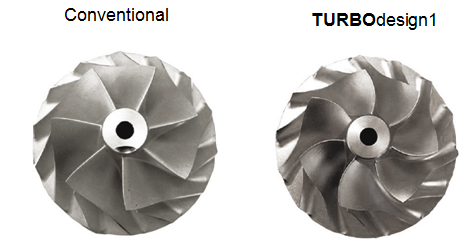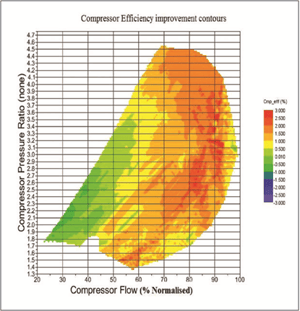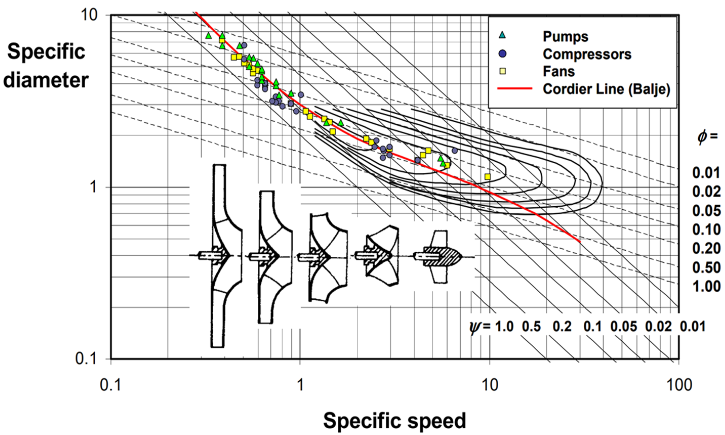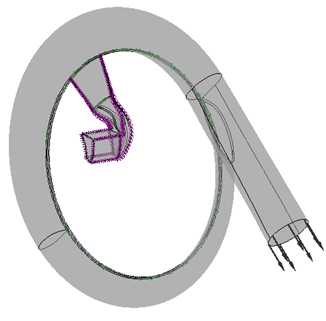One of the key challenges the automotive industry is facing is improvement of engine fuel economy with the aim of both reducing global CO2 emissions and making best use of the finite oil resources. It is well understood how a turbocharged diesel engine’s fuel consumption is directly affected by the turbocharger efficiency through the engine’s pumping cycle work. The more efficient the turbomachinery, the lower the work done by the engine during the pumping cycle, resulting in better engine BSFC (Brake Specific Fuel Consumption) and higher efficiency.
Diesel engines developed to meet future US and European emission regulations place an unprecedented demand on compressor performance in terms of pressure ratio and flow range capability. Additionally, the direct impact compressor efficiency has on engine fuel consumption means that the new generation of centrifugal compressors designed for turbochargers will have to meet very demanding efficiency targets. Cummins Turbo Technologies have been exploring the application of 3D inverse design techniques for improved compressor efficiency and pressure ratio.
Cummins Turbo Technologies is a leading designer and manufacturer of turbochargers for diesel and gas-derivative engines above 2.3 litres. Headquartered in the UK with global manufacturing facilities in: Brazil, China, Europe, India and USA along with dedicated technical centres in UK, China and USA, and is one of the major companies that has developed advanced turbocharging technologies to enable engine manufacturers to meet strict emissions criteria and engine performance requirements by using TURBOdesign1.

It is evident that turbocharger impellers have to operate at relatively high pressure ratios, and hence tip speeds, and until recently most turbocharger manufacturers were constraining their designs to blades with straight filaments. However, it has become clear recently that further improvement in turbocharger performance is difficult to achieve by using straight filament geometry for the impeller, and some manufacturers have considered the development of 3D geometries by using conventional design methods in which the blade geometry is modified iteratively by using some CAD representation and then analysed by CFD.
A turbocharged diesel engine’s fuel consumption is directly influenced by the turbocharger efficiency through the engine’s pumping cycle work. The more efficient the turbomachinery, the lower the work done by the engine during the pumping cycle, resulting in better engine BSFC. The overall turbocharger efficiency is the product of the compressor, turbine and rotor system efficiencies:
Overall Efficiency = Compressor Efficiency X Turbine Efficiency X Rotor
Compressor efficiency therefore has a direct impact on engine BSFC and is one of the areas recently targeted by Cummins Turbo Technologies for improvements.

The extensive study using TURBOdesign1 and 3D CFD confirms that in many turbocharger compressor applications higher performance is only possible by using 3D blade profiles. TURBOdesign1 provides the best means of rapidly designing 3D centrifugal compressor blades with superior performance.
The results confirm that the inverse designed impeller results in improved stage efficiency of up to 3 points and improvements in pressure ratio of up to 4.5% while maintaining or slightly improving the compressor’s stable operating range.
Mehrdad Zangeneh
Mehrdad Zangeneh is Founder and Managing Director of Advanced Design Technology and professor of Thermofluids at University College London.
View All Articles






Share This Post